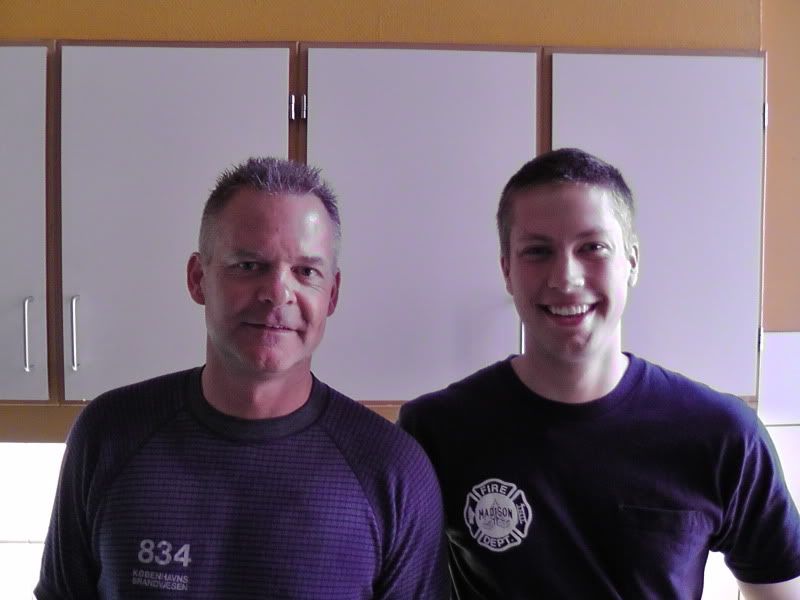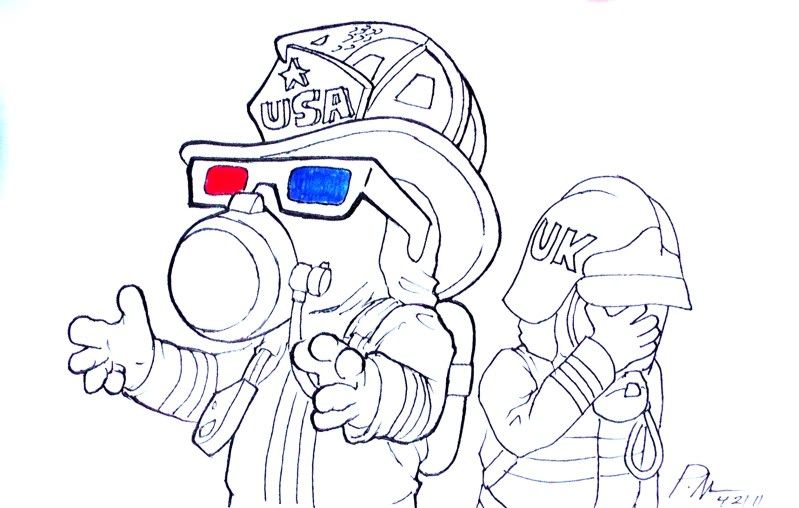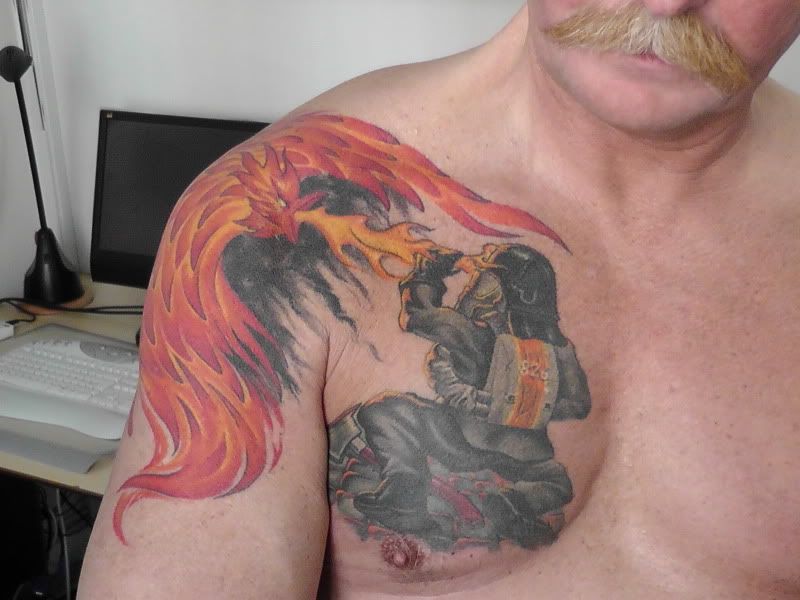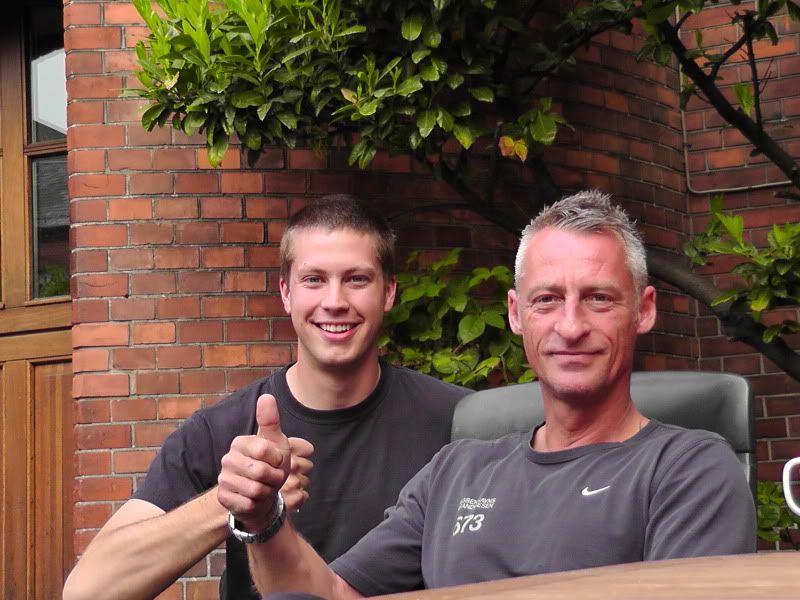In the USA more and more firefighters are pushing for larger diameter hoses. Reducing friction loss is one way to get more water on fires which are getting hotter and more dynamic with every new building that goes up. Bigger fire = Bigger water =Bigger hose.
American firefighters wrestle with a 2.5" hose
But in Copenhagen it's a different story.
What's that coming off the engine? An extension cord? Some sort of tow cable? Nope, that's the CFB's attack line which they use on 90% of fires. It resembles America's booster lines, only smaller.... just slightly thicker then a garden hose. Obviously it's very easy to advance into a building and maneuver once the fire is found. However, I couldn't fathom actually crawling into a smoke filled building hoping extinguish a serious fire with such a dinky hose.
I asked how they could get away with so little water, and I received a completely new perspective on water and it's place in the fire service.
First off, let me dispel any myths about European firefighters being tentative about fire attack. In Copenhagen's case, nothing could be further from the truth. They like to take their tiny hoses and get as close to the fire as they can possibly stand before opening up the fire stream at all. Is "undercompensation" a word? Then, where I've been trained to never use a fog stream when in an active fire environment for fear of steam burns, they just hold onto they're helmets and let steam conversion kick all the butts present. Their's and the fire's.
In Europe, research in fire science has created a new system of fire attack, many people refer to it as three dimensional firefighting. These strategies and tactics are slowly trickling into the states, but transferring European tactics to American fires is kind of a rough process.
The magical world of 3D firefighting (illustration by yours truly)
I am by no means an expert on three dimensional firefighting so I won't try to explain it like I am. Suffice it to say that water expands 1700 times when it converts to steam. In 3D firefighting this principle is employed by directing a small amount of water into the hottest part of a fire and letting it convert to steam snuffing the fire out. There's way more to it then that but you get the idea.
One advantage of using so little water is the reduction in water damage. CFB firefighters take pride when there isn't a puddle on the floor or a drop of water dripping from the ceiling after a fire. Water can do just as much damage as fire (especially in Copenhagen's ancient wood and stone apartment buildings which butt up against each other from one side of the city to the other) so reducing water damage is very important to the CFB.
Typical construction in downtown Copenhagen
I was allowed into some of the apartments after the fire had been extinguished, and I will admit that there was no water anywhere to be seen.
See? Dry as a bone.
It is important to note that the fire load (How big the fire will be, based on the amount of fuel) in a Copenhagen apartment is very different then what you would find in a comparable apartment in America. In the states everything we have is made of plastics, and we just own a ton of stuff. Plastic burns very hot, very fast and generate nasty volatile smoke. Not only is a fire in Copenhagen likely to be cooler, it will probably be less dynamic as well (i.e. conditions will change slower and more predictably).
The Copenhagen Fireman's Union is currently fighting the introduction of foam insulation into the building code, I just wonder how many firefighters realized the dangers plastics, Styrofoams, and other synthetics when they were first being used in the USA.
To really hammer home just how little water they use I'll discuss their hydrants and the CFB's ability to use them.
CFB fire hydrant
1 discharge, about 3" diameter off a hydrant; about 4" in diameter. The nut at the bottom can be removed to pump the left over water from the hydrant after use. Basically this was a much smaller hydrant then I was expecting to see in a city as big as Copenhagen.
Lastly, here in the states fire engine are equipped to attach their LDH (large diameter hose) to the hydrant and then drive to the fire, the hose deploying off the back of the rig as it rolls down the road. In Copenhagen they cannot do this. If a connection to a Hydrant must be made, someone must take hose from the engine to the nearest hydrant. Good thing they have handy dandy hose/hydrant carts they can just wheel over there.
Its just funny to think that they're usually flowing about 70 LPM (liters per minute) (18 GPM) and our smallest attack line on the MFD flows 684 LPM (180 GPM)












